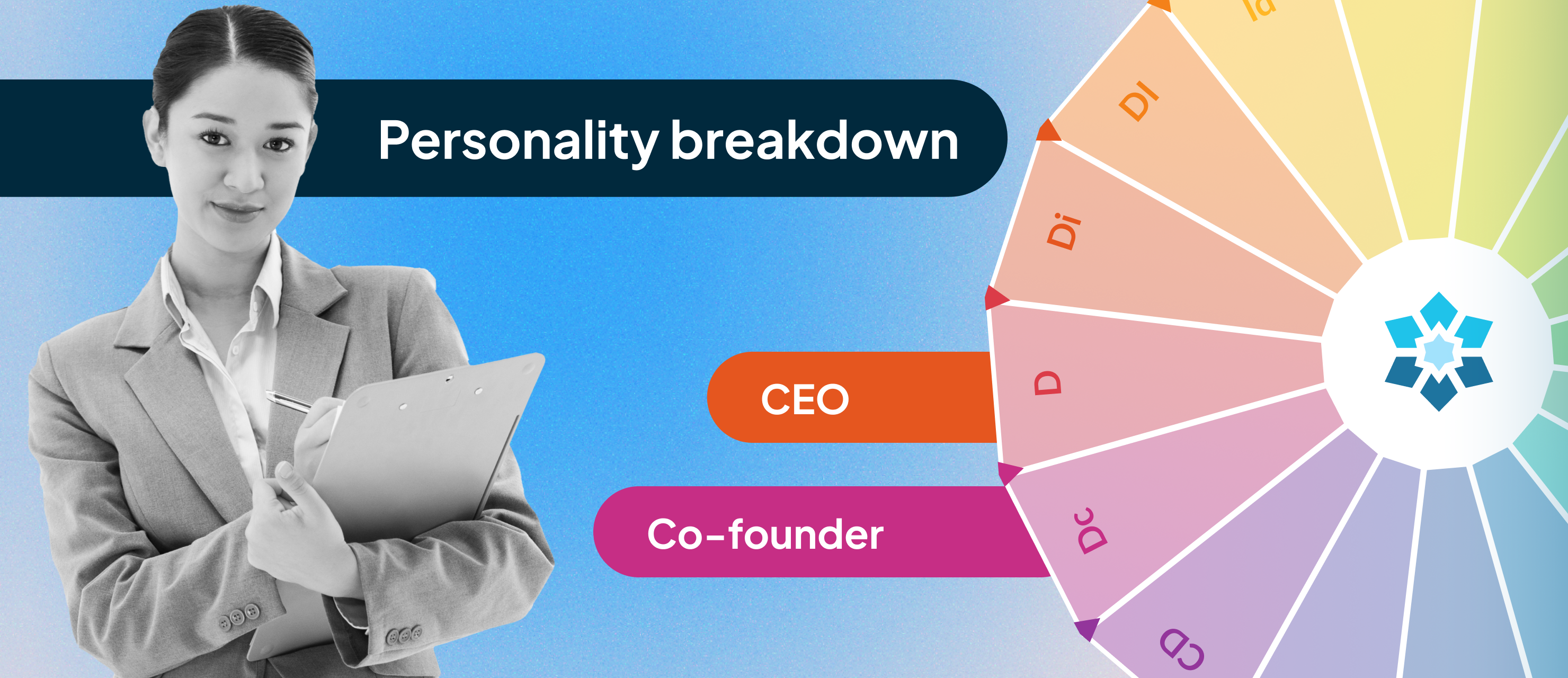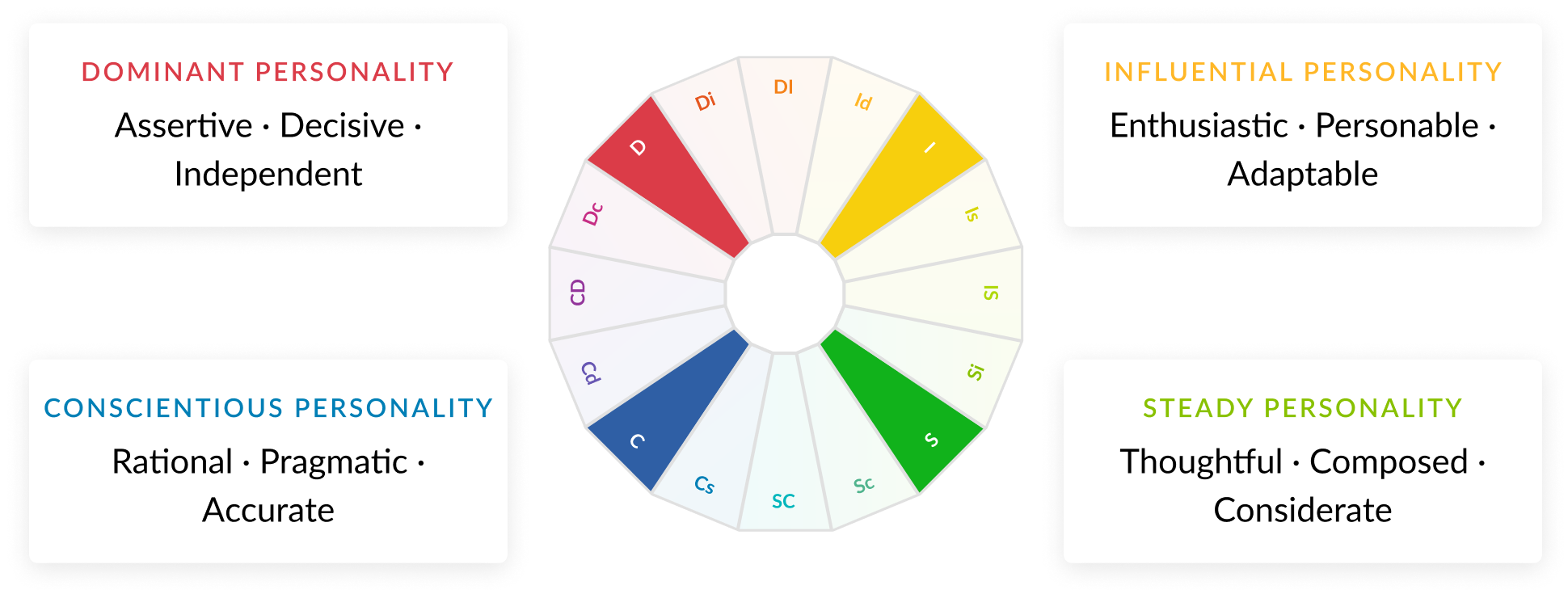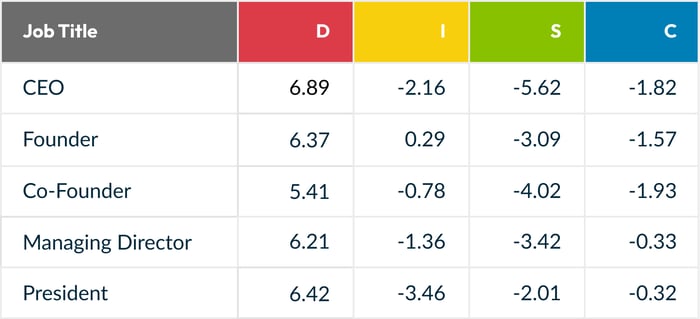
We asked Crystal… what personality type powers the modern CEO/Co-Founder?
Dive into any thriving business, and at the helm, you'll find a leader– a CEO or Co-Founder– steering the ship with a big-picture vision and confidence to carry out huge projects.
But beneath the title are psychological, behavioral, and personality-driven factors that subconsciously propel them forward each and every day— pushing their efforts past just board meetings and quarterly reports and making them the truly unique leaders they’ve worked hard to become.
We wanted to dissect the DNA of these very leaders a little bit more, so we asked ourselves a few preliminary questions:
- How does a CEO's innate personality influence their overall leadership style?
- How might a leader's DISC profile determine their approach to business innovation?
- Can we predict a leader's long-term success based on their inherent behavioral tendencies?
- Are there certain personality traits that align more with visionary versus operational leaders?
Ultimately, we know that a mere title doesn’t make a leader; it’s their experience, character, work ethic, and their core personality driving them towards every decision they make.
How We Used DISC to Decode the CEO/Co-Founder Personality
The DISC model is our compass— the framework that drives our personality predictions.
So, before we venture into the DISC psyche of the CEO and Co-Founder role, here’s a little background to the system behind the DISC personality framework:

- D (Dominant): Assertive, decisive, and independent.
- I (Influential): Enthusiastic, personable, and adaptable.
- S (Steady): Thoughtful, composed, and considerate.
- C (Conscientious): Rational, pragmatic, and accurate.
What Does Our Personality Data Say About a CEO/Co-Founder?
Now, let’s dive into the data. Here’s what Crystal’s data reveals about the most dominant personality traits in a CEO/Co-Founder:
CEO
Dominance (D) stands out the most for CEOs and Co-Founders, highlighting their drive and determination that’s often required for the demanding nature of these roles. The lowest trait, by far, is the Steadiness (S), suggesting that CEOs may not always prioritize patience.
Co-Founder
For Co-Founders, Dominance (D) is also the top trait (though not quite as pronounced as in CEOs). Co-Founders also seemed to display more of the Influential (I) trait, indicating that Co-Founders might be a little more outgoing and approachable than CEOs.
 Positive z-score (+) : Strong positive correlation with specific DISC types
Positive z-score (+) : Strong positive correlation with specific DISC types
Negative z-score (-) : Strong negative correlation with specific DISC types
Dominance (D): The Most Common Personality Type for CEOs/Co-Founders
Our data highlights Dominance (D) as the most intense trait among CEOs and Co-Founders, showing that these roles tend to carry an assertive, proactive, and goal-oriented disposition wherever they go.
These particular roles typically possess a strong drive, are proactive, and set highly ambitious goals, known for pushing boundaries and leading their team to achieve exceptional results.
Steadiness (S): The Least Common Personality Type for CEOs/Co-Founders
Steadiness (S) was the least common trait among these leaders, suggesting that CEOs and Co-Founders are often quick to act, preferring to move forward rather than wait for the perfect moment or needing assurance before pursuing a new idea.
How Does the Dominance (D) Trait Fuel Top CEOs and Co-Founders?
 1. Decision-Making Under Pressure
1. Decision-Making Under Pressure
Quick decisions are vital in leadership roles, especially when it comes to guiding an entire company! CEOs and Co-Founders with a strong Dominance (D) trait excel at making fast choices, confidently steering business strategies or launching new products with much more ease than other personality types.
2. Visionary Leadership
Managing and running operations is one thing, but with a Dominant (D) CEO and Co-Founder, these leaders are truly challenging the status quo, looking ahead, setting audacious goals, and rallying their teams.
Their dominance is what’s propelling their company forward, as they’re comfortable setting ambitious targets, inspiring their teams, and pushing their company past their startup phase quickly and eagerly.
3. Relentless Drive
Even when they’re faced with obstacles, Dominant (D) leaders don’t easily back down at the sight of a hiccup; their tenacity drives them to tackle challenges head-on, ensuring their entire company preserves, even through tough times.ceo-1.png?width=120&height=120&name=leadership(1)ceo-1.png)
4. Risk-Taking and Innovation
Innovation almost always requires risk, and dominant leaders certainly don’t shy away from it! Dominant (D) CEOs and Co-Founders are often confidently investing in groundbreaking ideas, cultivating a team culture that values innovation and continuous experimentation, and overall spearheading risk-taking approaches that can lead to market disrupting products and services.ceo.png?width=172&height=172&name=deal(1)ceo.png)
5. Influencing and Negotiating
Dominant (D) leaders can negotiate big deals and build influential partnerships with grace and ease, excelling at guiding discussions, persuading key players, and leading projects that can wildly boost their company’s trajectory.
Understanding the Personality Type of Across Industries
And while the leadership styles of Dominant (D) leaders have many parallels, their individual leadership styles can look vastly different depending on their industry.
Here’s a little glimpse into how these personality types manifest in different sectors.
![]()
Design and Creative: Dominance (D) & Influential (I)
The design and creative industry thrives on innovation and originality, so leaders here typically have to blend both Dominant (D) traits to drive vision and Influential (I) qualities to inspire their teams towards creative excellence.![]()
Finance and Banking: Dominance (D) & Conscientious (C)
Precious and risk-management are crucial in finance, so CEOs in this domain often have to demonstrate both Dominance (D) and Conscientious (C) traits, especially when navigating high-risk financial decisions.![]()
Education: Dominance (D) & Steadiness (S)
Leadership in education requires a mix of both Dominance (D) for vision and Steadiness (S) for effective communication to ensure there are open dialogue channels between educators, students, and parents.
Communicate Confidently with Leaders and Beyond with Crystal.
Use Crystal to get a clear vision of what drives your team, potential collaborators, and future clients by analyzing their DISC personality type-- all through the data we just showed you.
Set up your free Crystal account and predict 10 personalities for free today!







